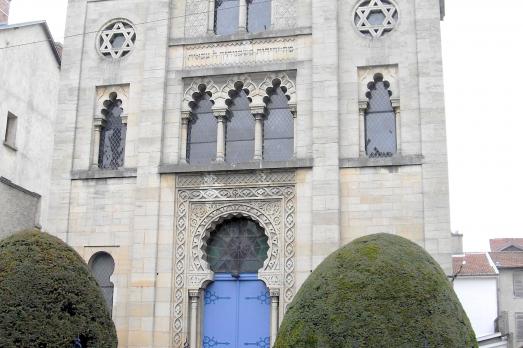
Synagogue in Châlons-sur-Marne
Châlons-sur-Marne, FR
The Synagogue in Châlons-sur-Marne is an Ashkenazi synagogue completed in 1875 by architect Alexis Vagny. This Neo-Moorish stone building still serves as a synagogue.
Here you can search for a building to visit. You can use the map find destinations, or you can use the filters to search for a building based upon what different criteria.

Châlons-sur-Marne, FR
The Synagogue in Châlons-sur-Marne is an Ashkenazi synagogue completed in 1875 by architect Alexis Vagny. This Neo-Moorish stone building still serves as a synagogue.
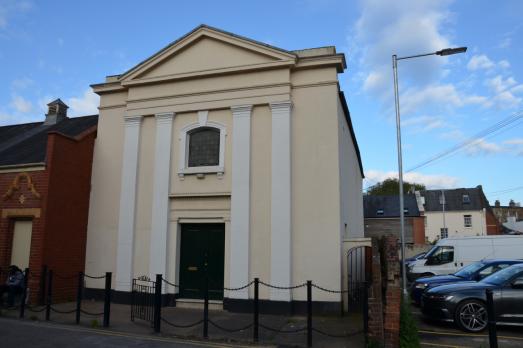
Cheltenham, GB
The Synagogue in Cheltenham is an Ashkenazi synagogue completed in 1837-39 by architect W.H. Knight. It was rebuilt in the 1950s. This brick synagogue in the Regency and Georgian style still serves as a synagogue.
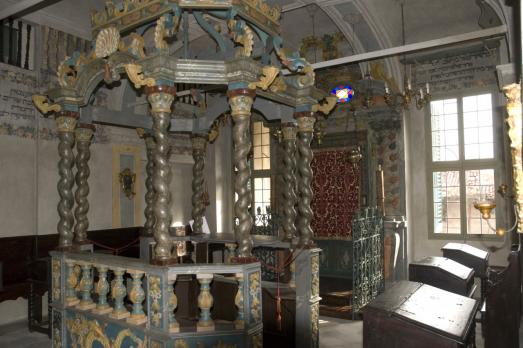
Cherasco, IT
The Synagogue in Cherasco was built in the 18th century. This Baroque brick building still serves as a synagogue.
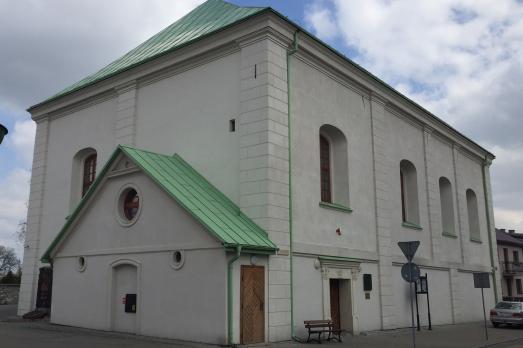
Chmielnik, PL
The synagogue was probably built in the years 1633-1664. It was located 300 metres to the north of the market square, in the centre of the Jewish district. Public utility buildings, such as the Talmudic house or the rabbi's house were situated in its vicinity. A cemetery, used since 1565, was adjacent to the synagogue's north wall. The synagogue, built on a rectangular plan, consisted of a one-room prayer hall, a two-part vestibule on the ground floor and, most probably, a women's gallery above it. The building's architectural features are characteristic of the Renaissance sacral style of Jewish architecture. The synagogue was rebuilt after the fire of 1849. The architectural features preserved since that time include the cross vault, the Rococo-style circular and square stuccoes, the four-side roof, the crown cornice surrounding the building as well as, presumably, the division of the façade: the four-axial layout of the northern and southern facades, and the biaxial layout of the eastern façade; and its decoration. The 19th-century rebuilding works greatly changed the original look and proportions of the synagogue. However, its original layout is still legible. The synagogue's interior consists of a square prayer hall, a two-room vestibule on the ground floor and a women's gallery above it. There are elements of rich decoration preserved in the Prayer Hall. Apart from the vault, they include sophisticated capitals supporting the cornice and a decoratively framed circular window on the eastern wall.
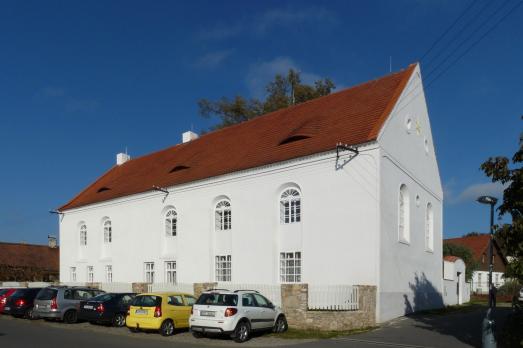
Čkyně, CZ
The Synagogue in Čkyně is an Ashkenazi synagogue completed in 1828, restored in 1999. In use until WWII, this Neo-Classical brick synagogue now serves as a cultural centre.
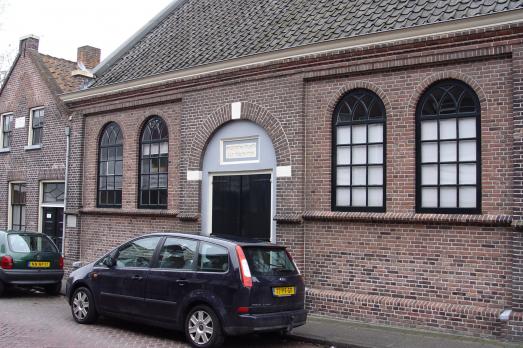
Coevorden, NL
The synagogue, constructed as a rectangular building with a gable roof, replaced an older house shul (dated ca. 1768) and was completed in the year 1840. The building was heavily renovated in 1879. The original windows and the gallery were reconstructed and restored during a renovation in 1975. The semicircular pediment above the main entrance contains the Hebrew inscription of I Kings 8:35b and the date 5639 (1879 CE). A small turret was located on the roof of the synagogue. The Jewish religious service did not resume after the Second World War ended. The Jewish community of Coevorden dissolved in 1958. The abandoned building was subsequently sold. After the renovation, the building was used as a music school. Wouter van Rossem created a sculpture against the side wall of the building in commemoration of the deported Jews of Coevorden.
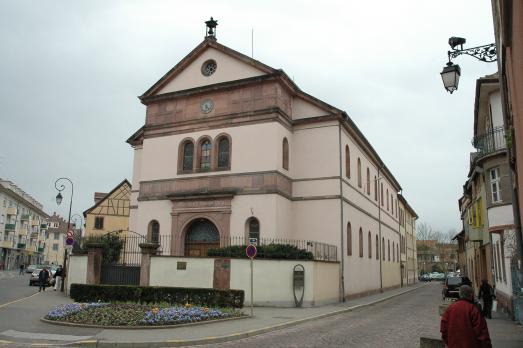
Colmar, FR
The Synagogue in Colmar is an Ashkenazi synagogue completed in 1843. The synagogue has been restored in 1885 and 1913. This Neo-Classical stone building still serves as a synagogue.

Commercy, FR
The Synagogue in Commercy is an Ashkenazi synagogue built in the 16th century. This Neo-Classical stone synagogue now serves as an office building.
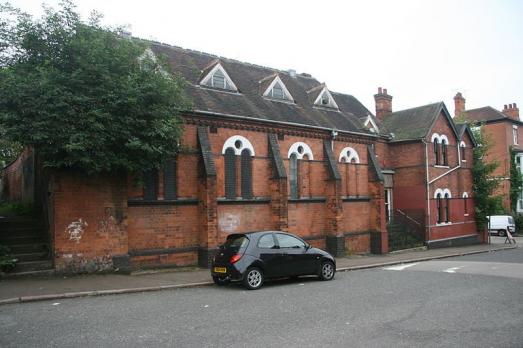
Coventry, GB
The Synagogue in Coventry is an Ashkenazi synagogue completed in 1870 by architect Thomas Naden. The synagogue was restored in 1964. In use until 2013, this brick synagogue in the Victorian style now serves as a dwelling.
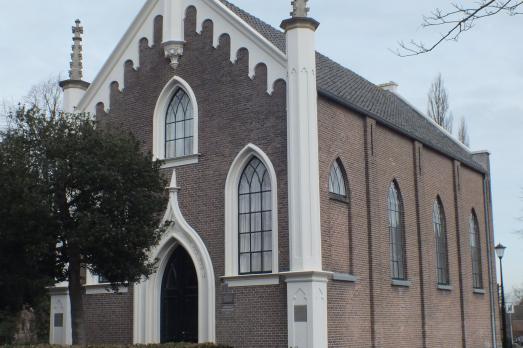
Culemborg, NL
The synagogue was built next to an older synagogue which dated back to 1791. The new synagogue was consecrated in 1868. The design of the building was executed in an early Neo-Gothic style in which the the Gothic features were purely ornamental and not structure-related. The Neo-Gothic elements include the plastered octagonal pilasters topped by pinnacles, the rounded frieze and the ornamental door and window frames. The pointed arched windows contain iron-cast tracery. A Hebrew inscription is located above the main entrance and refers to Isaiah 56:7 and the date. The structural expansion at the back side of the building was used as the location for the Torah ark and is still recognizable as such from the outside. The women's gallery is still present in the assembly hall. The Jewish community of Culemborg meerged with Utrecht in the year 1947. Three years later, the building was redeveloped as a Christian Reformed church. In 1981/82, the building was renovated by the architect H. K. J. van der Wielen.

new
Nestled amidst the serene landscapes of the Harz region, lies a hidden gem for nature enthusiasts and history buffs alike - the Harz Monastery Hiking Trail. Lace up your hiking boots and embark on this captivating adventure that will transport you back in time.

The Holy Mile (Miglio Sacro) of Naples is a one-mile-long itinerary, through sacred places linked to the city's patron saint, San Gennaro, in the Rione Sanità district. Discover the city from a new perspective with this unique walking tour.

As a university city, cultural offerings abound in Tartu and will reach their peak after being designated one of three European Capitals of Culture for 2024. In this list, we've compiled the most interesting sacred places to visit in and around the old town.